Looking for an authentic Indonesian adventure? Just west of Bali lies Java—one of the world’s largest and most populated islands that many travelers tend to overlook. But here, you can dive deep into rich traditions, breathtaking landscapes, and the genuine warmth of local communities.
Why You Should Visit Java
If you’re still on the fence, it’s time to reconsider. Java, nestled in the heart of Indonesia, might not be as well-known as its neighboring islands, but it’s bursting with surprises. Imagine lush tropical fruit trees and palms slowly giving way to mountain pine forests mixed with banana trees. Head east, and you’ll find expansive savannas home to rare and endemic wildlife.

Wherever you are on Java, you’re likely to spot one of its many mighty volcanoes. Around these peaks, you’ll discover shimmering blue crater lakes, natural hot springs, and sulfur mines.
Thanks to heavy rains and mountain springs, Java is home to stunning waterfalls—perfect spots for a peaceful swim. Prefer beaches? Java’s coastlines and nearby quiet islands offer idyllic escapes.
History buffs will feel right at home here. Java has been a cultural hub for centuries. From ancient kings and sultans to followers of Hinduism, Buddhism, animism, and Islam—all have left behind grand temples, palaces, and sacred sites, many of which are still in use today.
Best of all, the warm and welcoming locals of Java are always ready to help and share unforgettable moments that will make you fall in love with their island. For me, it’s the people who truly make Java special. Since much of the island remains off the typical tourist radar, just venturing a few kilometers away from the main attractions gives you the chance to experience the real, authentic Indonesia.

Must-Visit Places in Java
Many travelers rush through Java, sticking to the most popular spots like Ijen Crater, Bromo, and Yogyakarta before moving on. If you have the time, slow down and explore wisely—Java’s charm lies not just in its famous landmarks but also in the hidden gems and authentic experiences you’ll find along the way.
Another great strategy for exploring Java is to focus on one or two regions at a time. This approach allows you to fully immerse yourself in the local culture, discover hidden gems, and avoid exhausting long-distance travel across the island.

West Java
Thousand Islands and Tidung Island
The northern islands of Java offer a paradise-like escape. Just a few hours from bustling Jakarta, you’ll find white sandy beaches and endless azure seas. However, unless you’re on a private boat trip, expect these popular tourist spots to be bustling with local visitors.

Bandung
One of Bandung‘s unique highlights is the Floating Market in Lembang, where you can sample local snacks and shop for handmade crafts on the water.
Nearby, the breathtaking Kawah Putih (White Crater), with its turquoise volcanic lake set amidst dramatic sulfuric landscapes, is a must-see. The majestic Tangkuban Perahu volcano, shaped like an overturned boat, offers an unforgettable trekking experience and stunning views of steaming craters. For a more tranquil escape, take a stroll through the lush tea plantations that stretch endlessly across the hills, providing picturesque scenery and a peaceful atmosphere.
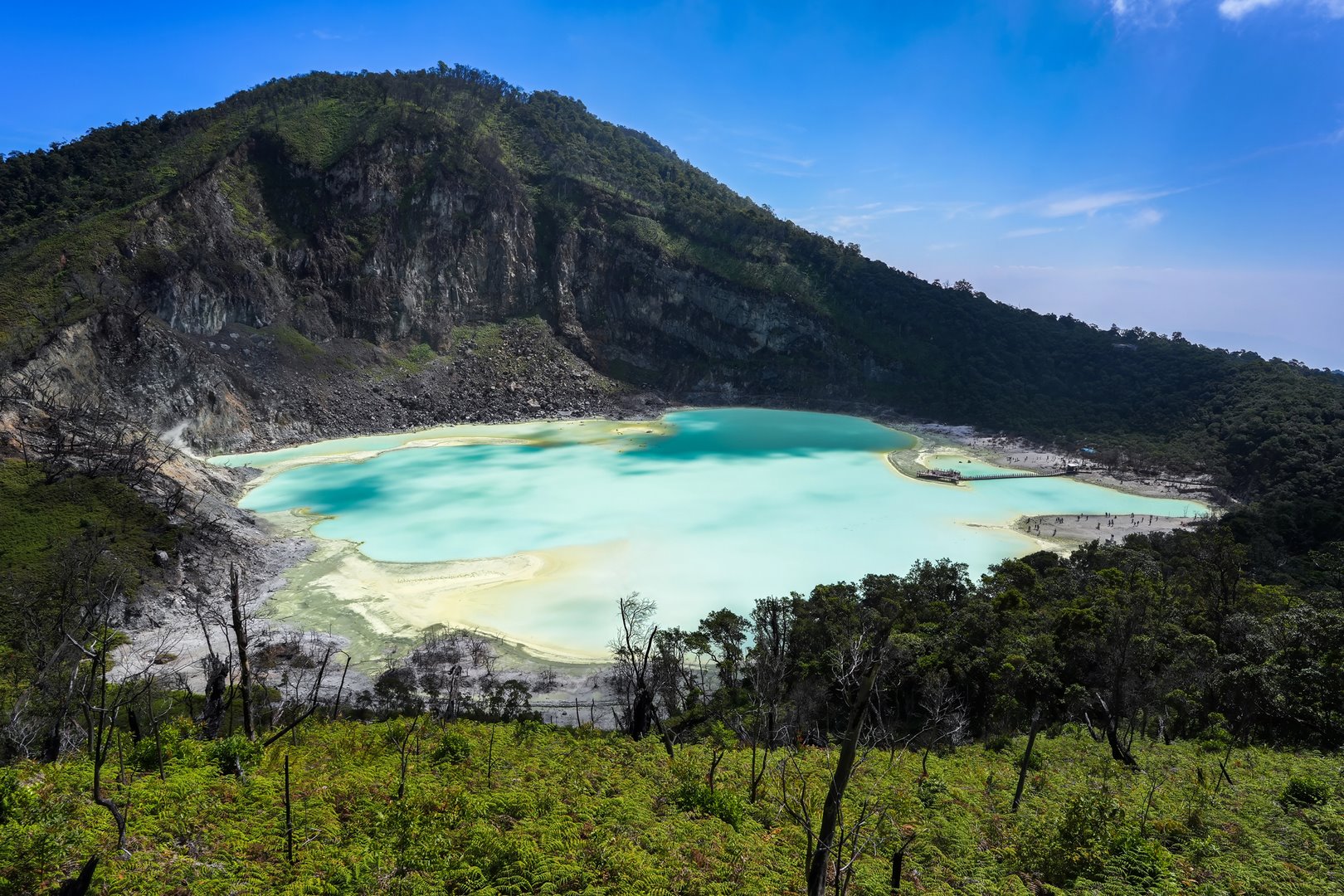
Bogor
Bogor, located just a short distance from Jakarta, is a popular getaway for those looking to escape the hustle and bustle of the capital. Nestled in the highlands and surrounded by mountains, the city boasts a cool, refreshing climate that’s perfect for relaxation.
At its heart lies the Bogor Botanical Garden, home to hundreds of plant species from around the world, including the rare Rafflesia arnoldii. Bogor is also a culinary hotspot, with Surya Kencana Street—known as Bogor’s Chinatown—offering an array of delicious local dishes.

Baduy Tribe
If you’re looking for a truly unique cultural experience, visiting the Baduy Tribe in Banten is an unforgettable journey into Indonesia’s ancestral heritage. The community is divided into Baduy Dalam, who strictly adhere to traditional customs and shun modern influences, and Baduy Luar, who are slightly more open to outsiders.
As a traveler, you’ll witness their harmonious way of life, sustainable practices, and beautifully woven traditional clothing. It’s a rare opportunity to step back in time and connect with a culture that remains steadfastly rooted in its traditions.
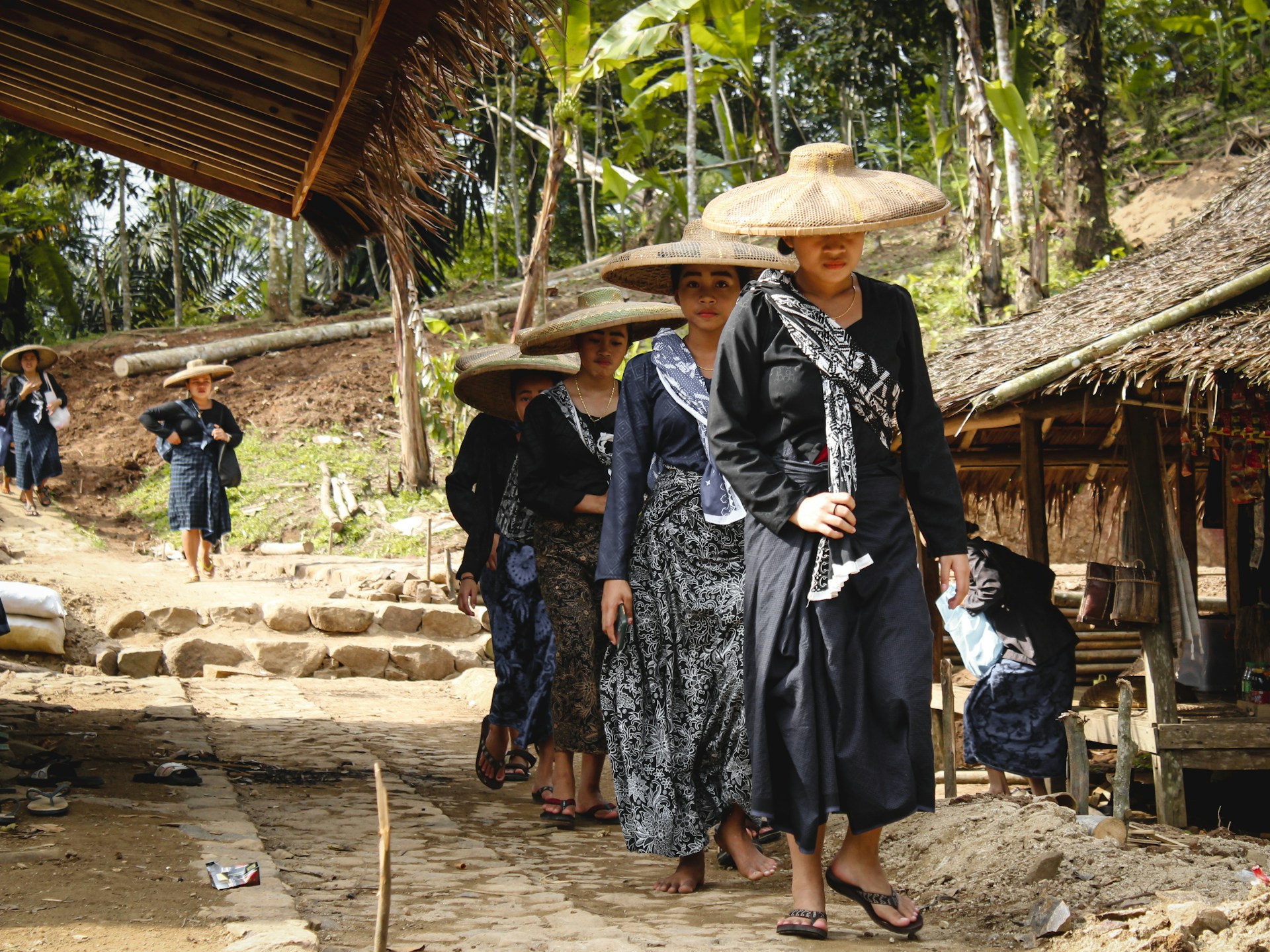
Central Java
Dieng Plateau
This volcanic Dieng plateau in the heart of Java was historically a significant site. It is home to the oldest Hindu temples and showcases a unique blend of Islam with shamanistic elements. If history isn’t your thing, you’ll be amazed by the natural wonders like sulfur lakes, craters, hot springs, and the breathtaking sunrise from nearby peaks.
Due to its altitude (around 2,000 m above sea level), plants that don’t grow elsewhere in Java thrive here, such as garlic, cabbage, carrots, lettuce, and the carica fruit, originally from the Andes.

Baturaden
Located at the foot of Mount Slamet, Java’s second-highest volcano, Baturaden is a lush valley beloved by locals seeking relaxation. It’s known for its numerous waterfalls and sulfur hot springs, where visitors can unwind and enjoy nature.
It’s a hidden gem where you’re unlikely to encounter many foreigners, making it a top recommendation for those seeking an off-the-beaten-path experience.

Yogyakarta
Once Indonesia’s capital, Yogyakarta is now the island’s only region ruled by a sultan. Known for its rich history and traditional crafts like batik, fans, wooden masks, and coconut shell handbags, it attracts millions of tourists annually. Renting a motorbike here is easy, allowing you to explore nearby areas.
Beyond the famous Borobudur and Prambanan temples, you’ll find smaller and more affordable temples like Mendut. Plus, the city offers plenty of beaches for a relaxing break.

Karimunjawa Island
The northern sea of Central Java holds hidden natural beauty. With typically calm currents, Karimunjawa is a must-visit destination, especially for those who love the underwater activity. The island boasts well-preserved coral reefs, various types of sea anemones, and many beautiful marine animals.
Additionally, Karimunjawa is home to a shark conservation area. The beaches here are stunning and very clean, with many resorts offering private beaches where you can freely swim, go kayaking, or simply enjoy the sunset.

Solo (Surakarta)
Solo, also known as Surakarta, is a city rich in Javanese culture and tradition, often considered the cultural twin of Yogyakarta but with a quieter and more authentic charm. As the birthplace of batik, Solo offers countless opportunities to explore traditional markets and workshops where you can witness artisans creating intricate designs.
The city is also home to magnificent royal palaces, such as Keraton Surakarta and Mangkunegaran Palace, which provide a glimpse into Java’s regal past.

East Java
Mount Bromo
Among Java’s many volcanoes, Bromo stands out for its popularity. Don’t worry about strenuous hikes—roads lead to several viewpoints overlooking Bromo and its taller neighbor, Mount Semeru. For a closer look, descend into the “Tengger Sand Sea,” a volcanic ash plain, and hike up to peer into Bromo’s smoking crater.
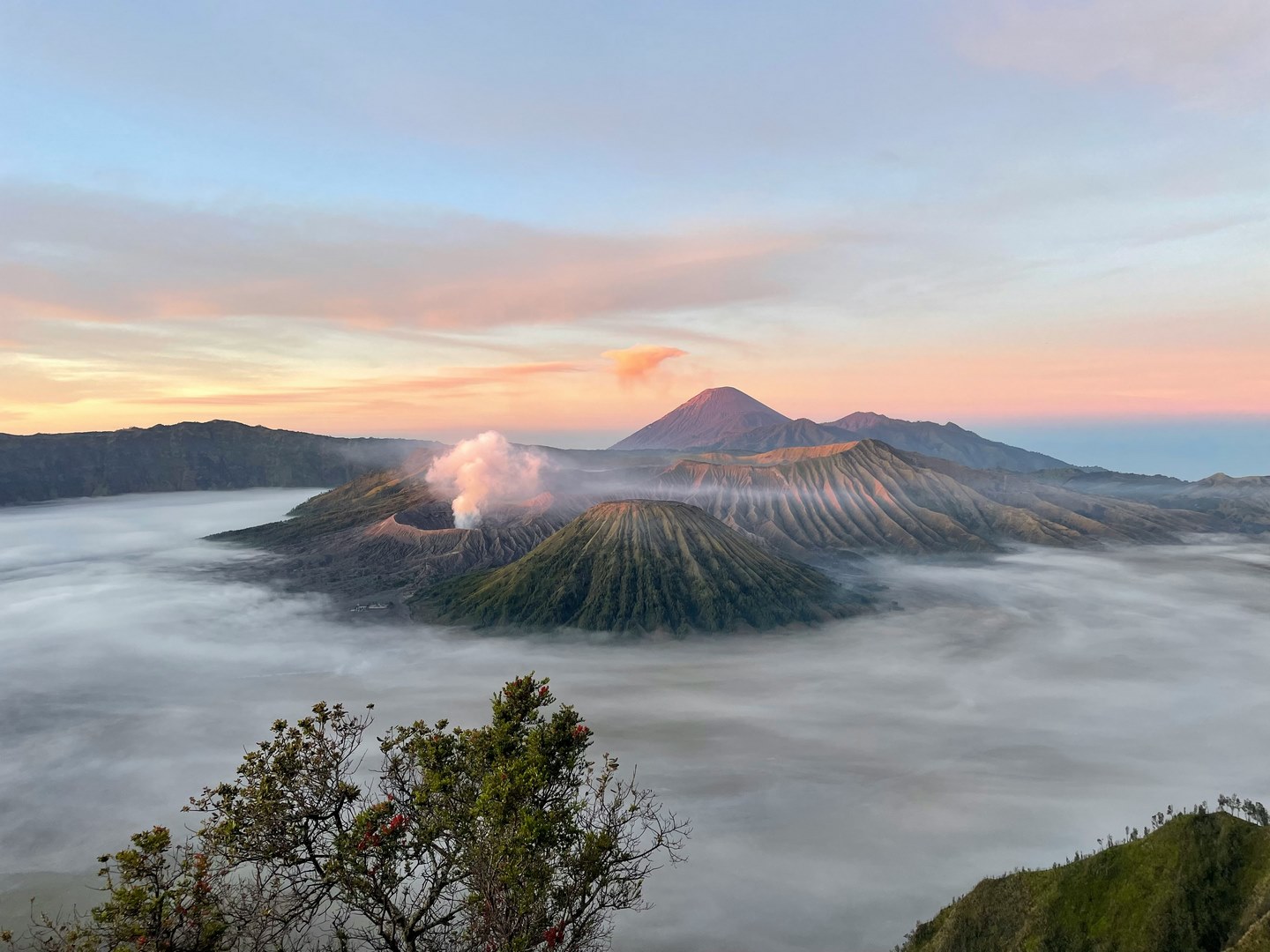
Ijen Crater
The blueish lake inside this volcanic crater is mesmerizing but also sobering due to the sulfur miners laboring in harsh conditions. Ijen is home to the world’s largest acidic lake, capable of dissolving metal. A night hike reveals the famous blue flames erupting from the crater.

Malang
Located in the mountainous area, Malang has a cool climate even during the day, with average temperatures ranging from 22°C to 27°C. It’s a gateway to Bromo but there are plenty of other destinations you can visit including Tumpak Sewu Waterfall, Coban Rondo Waterfall, exploring Malang’s Old Town and the colorful Jodipan Village.
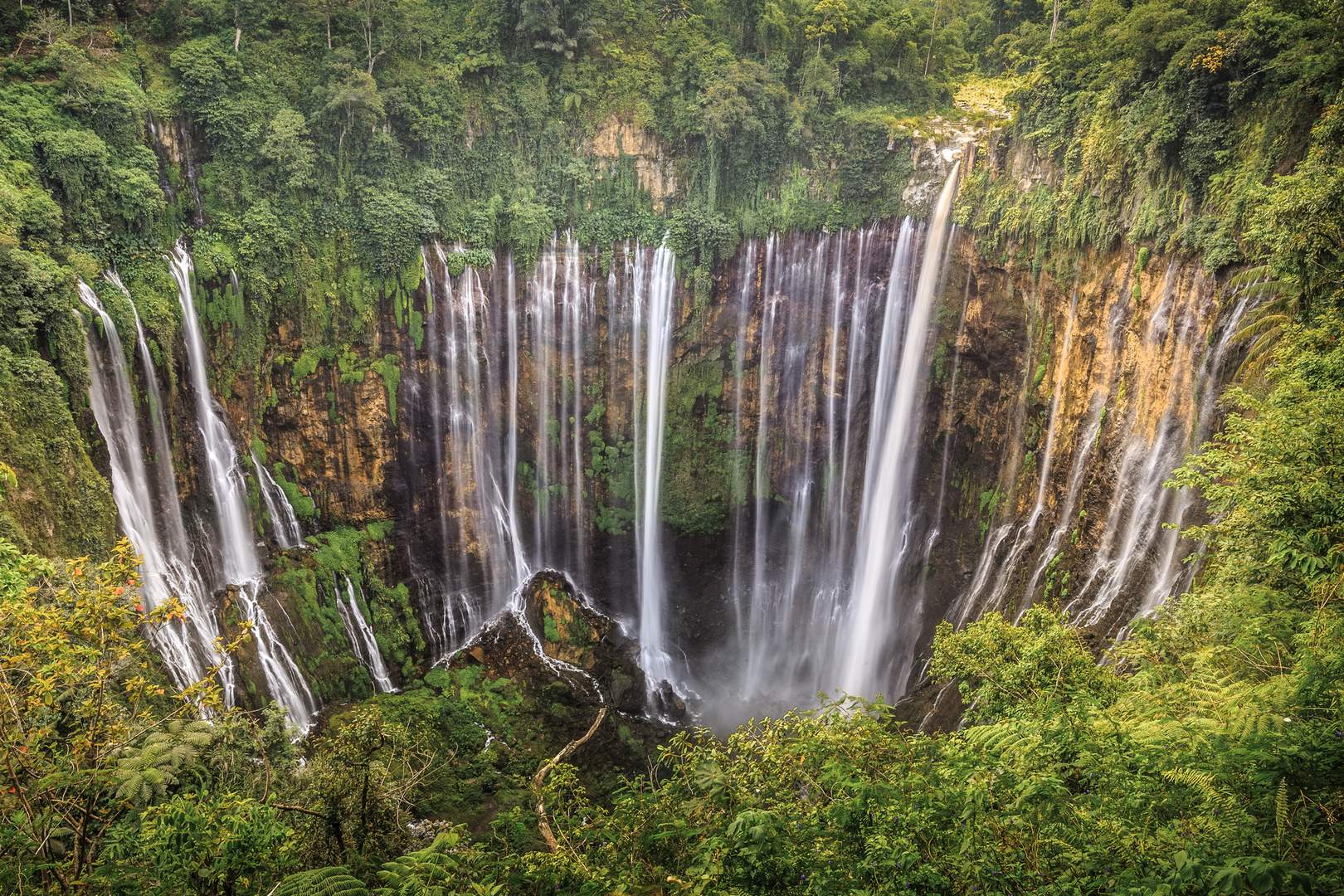
Banyuwangi
Banyuwangi, located at the eastern tip of Java, is a great alternative to Bali, with a port that directly connects the two islands. Known for its stunning natural beauty, it’s home to national parks like Baluran, often called the “Africa of Java” for its vast savanna landscape. Banyuwangi also features world-class surfing beaches.

What to Do in Java
Enjoy Sunrise over Volcanoes
Java is home to around 45 active volcanoes, many towering over 2,000 meters. Watching the sunrise over these majestic peaks is one of the most unforgettable experiences. Whether it’s the otherworldly landscapes of Mount Bromo, the eerie blue flames of Kawah Ijen, or the breathtaking views from Dieng Plateau, each location offers a unique and awe-inspiring way to start the day.

Taste the Flavors of Java
Explore Java’s local markets, where you can sample traditional delicacies like nasi liwet, gudeg, and serabi Solo, while experiencing the authentic daily life of locals. Markets are also a great place to find the centuries-old tradition of Jamu, Java’s herbal medicine, made from turmeric, ginger, and natural ingredients.

Learn Javanese Cooking
Java is the birthplace of tempeh, the famous fermented soybean cake now loved worldwide. Visit a local tempeh-making home industry to see how this protein-rich staple is traditionally crafted. For a more hands-on experience, join a Javanese cooking class, where you’ll learn to prepare authentic local dishes using fresh market ingredients.
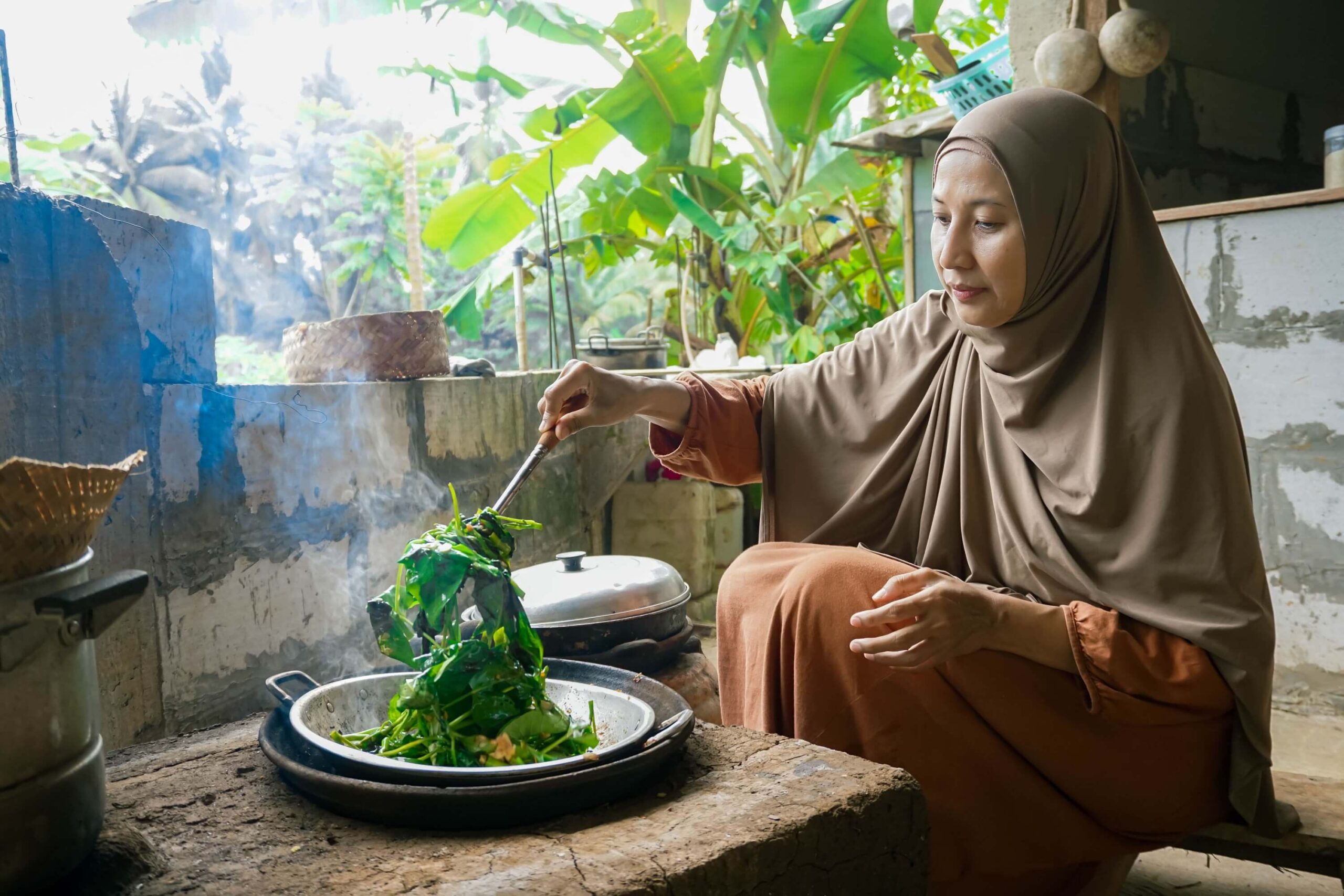
Try Jemparingan
Experience Jemparingan, a unique form of Javanese archery, deeply rooted in Yogyakarta’s royal heritage. Unlike modern archery, Jemparingan is practiced while sitting on the ground, emphasizing mindfulness, focus, and inner balance rather than just accuracy. The bow, made from traditional materials, requires a steady hand and calm mind, making it more of a spiritual discipline than a sport.

Enjoy Puppet Performance
Experience the mesmerizing art of wayang kulit, Javanese shadow puppetry that brings ancient epics to life through intricate puppets and enchanting gamelan music. Gamelan, Java’s traditional orchestra, consists of gong-like instruments, metalophones, and drums, creating a hypnotic rhythm that accompanies ceremonies, dances, and shadow puppet performances. You can also join gamelan workshops.

Watch the Spectacular Ramayana Ballet
Enjoy the breathtaking Ramayana Ballet, a grand performance that combines dance, drama, and music to retell the legendary love story of Rama and Sita. Often staged at the magnificent Prambanan Temple, it’s an unforgettable cultural experience under the night sky.
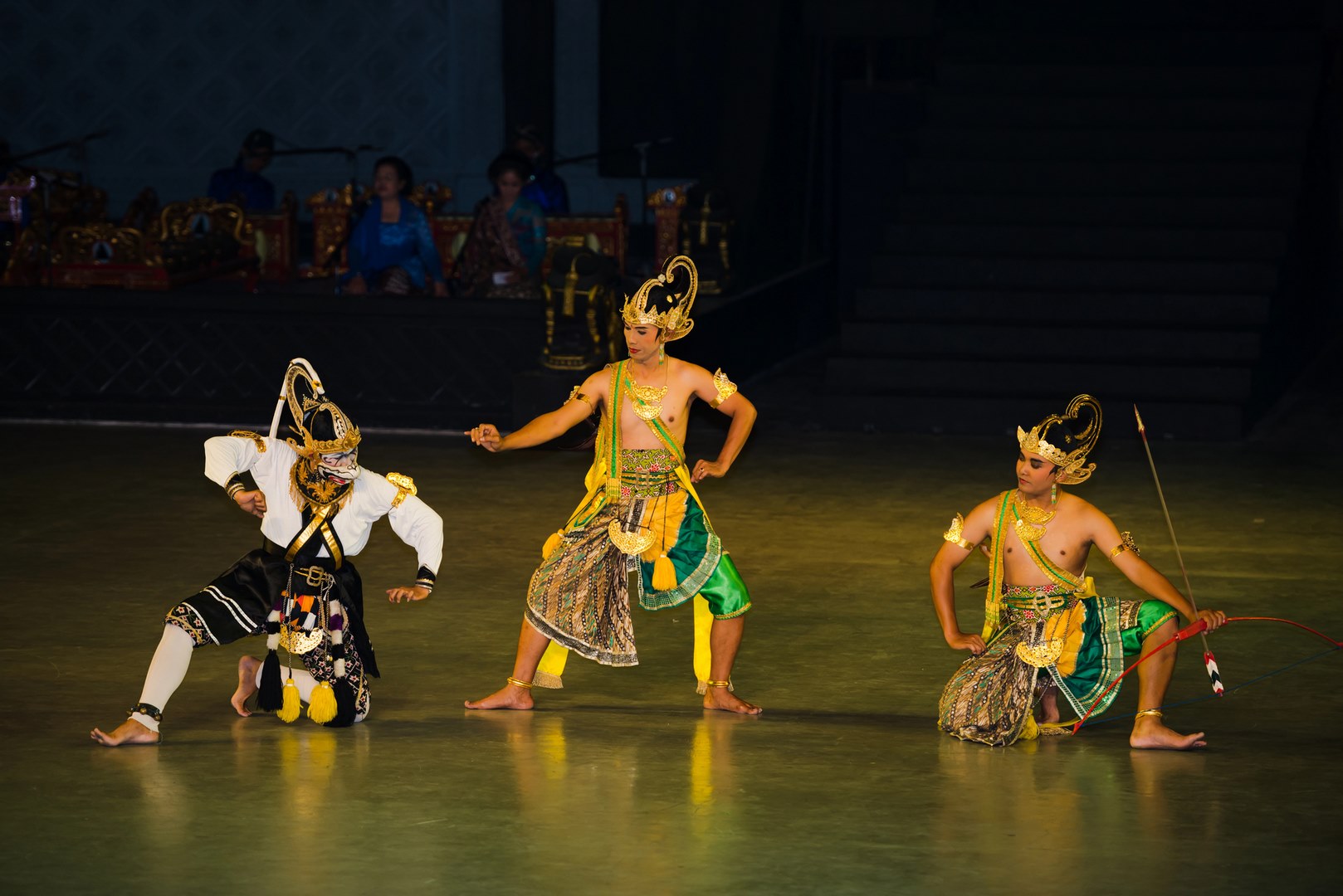
Join a Batik-Making Workshop
Discover the intricate process of batik, Java’s iconic textile art, by joining a hands-on workshop. Learn how to create your own designs using traditional wax-resist dyeing techniques and take home a unique souvenir of your cultural adventure.
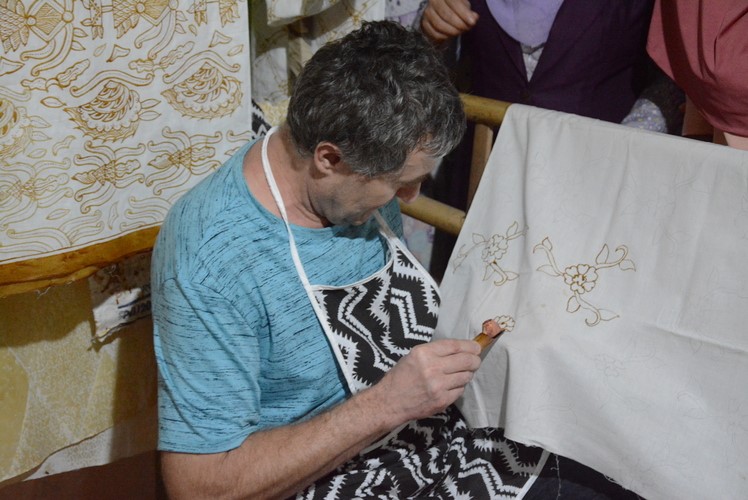
Watch Ebeg
Ebeg is a traditional trance dance from Banyumas, Central Java, where performers enter a hypnotic state and display seemingly supernatural movements. It is often associated with Jaranan (Kuda Lumping), another trance dance where performers ride woven bamboo horses and sometimes perform incredible feats, such as walking on fire or eating glass.

Getting to Java
Java is well-connected to the world, with Jakarta (Soekarno-Hatta International Airport – CGK) serving as the main international gateway. Most long-haul flights arrive here, making it the most common entry point for travelers. However, for those coming from neighboring countries and nearby Indonesian islands, there are also frequent flights to Surabaya, Yogyakarta, Semarang, and Bandung, providing convenient access to different parts of Java.
Flying from Europe or Other Distant Locations
If you’re traveling from Europe or further destinations, it can often be cheaper and more convenient to fly into Kuala Lumpur or Singapore, both of which have excellent international connections. From there, you can take a budget-friendly regional flight to Java with airlines like AirAsia, Scoot, or Batik Air, which frequently serve cities like Jakarta, Surabaya, and Yogyakarta.
Arriving by Ferry
For travelers coming from Bali, Sumatra, or other nearby islands, ferries are a popular and budget-friendly option. The most well-known route is from Bali to Banyuwangi (East Java) via the Ketapang-Gilimanuk ferry, which operates 24/7 and takes about 30-45 minutes. From Sumatra, ferries run from Bakauheni to Merak, connecting Sumatra to West Java in about 2 hours. These ferry routes make island-hopping across Indonesia both affordable and accessible.
When to Visit and Why
Java, like the rest of Indonesia, has two main seasons: the dry and the rainy season. The dry season runs from May to September, with occasional showers starting towards the end.
Personally, I prefer the rainy season. Mornings are typically sunny and hot, while rain usually falls in the afternoon. Although it’s not guaranteed, you can expect clouds to gather by noon and rain to start around 2 PM. By starting your trips early, you can return before the rain begins. The wettest months are January and February.
The dry season offers sunny days with temperatures in major northern cities like Jakarta and Semarang reaching up to 33°C, often feeling hotter due to high humidity and little breeze. Midday can be unbearable, so plan your outings for early mornings or late afternoons.
Many travelers prefer visiting during the transitional months—March/April or October/November—when the weather is more balanced.

The best time to visit depends on what you want to do. If you’re planning a beach holiday, the dry season is ideal for clear skies and calm seas. The mountains are also best visited in dry months to avoid landslides and hazardous trails. Some transport services, like the fast boat to Karimunjawa, don’t operate outside the main season, leaving only the slow ferry as an option.
However, global warming has made Java’s weather increasingly unpredictable. The traditional wet and dry seasons are becoming less distinct, with heavier rainfalls, longer dry spells, and more extreme conditions.
Not sure when to travel to Java? Check Best Time to Visit Indonesia: Months and Weather Insights.
Visa and Entry Requirements
After the pandemic, Indonesia introduced a visa requirement for most nationalities. However, for short visits, it’s mostly a matter of simple bureaucracy.
Visa on Arrival (VOA) & Short-Term Stay
For stays of up to 30 days, travelers can apply for a Visa on Arrival (VOA) online before arrival or upon landing at designated airports and seaports. The VOA costs IDR 500,000 (~$35 USD) and can be extended once for another 30 days. While the extension process is available online via evisa.imigrasi.go.id, some travelers have recently faced technical issues and had to visit the immigration office in person.
Longer Stay Visas
For those planning a longer stay, it is possible to apply for a B211A visa at an Indonesian embassy before departure. This visa initially grants 60 days and can be extended twice for another 60 days each time, allowing a maximum stay of up to six months. However, the extension process can be bureaucratic, and many travelers use visa agents to simplify the process.
Important Notes
- Your passport must be valid for at least 6 months from the date of entry.
- You must have a return ticket or proof of onward travel.
Backindo Tip: As visa policies can change frequently, it’s always best to check the latest official information before traveling.
As of 2025, travelers must also complete a customs declaration online within three days before departure. The form can be filled out at ecd.beacukai.go.id, and travelers will receive a QR code to show at customs.
Money and Approximate Costs
In Indonesia, payments can only be made in Indonesian Rupiah (IDR). For convenience, it’s best to exchange some cash at a currency exchange office upon arrival but rely mostly on ATM withdrawals for daily expenses. The availability of ATMs and exchange offices depends on where you travel—while big cities have plenty of both, remote areas may have few or no ATMs and no currency exchange options.

For reliable ATM access, bring multiple cards, ideally a mix of Visa and Mastercard, as some ATMs may reject certain cards, run out of cash, or even “eat” your card. A combination of a Revolut or Wise card for low-fee withdrawals is also highly recommended. Always check with your bank for foreign transaction fees and ATM withdrawal limits before your trip.
When withdrawing, look for ATMs of Mandiri, BRI, or BNI banks, as they are more reliable and offer better withdrawal limits. ATMs dispensing 50,000 IDR bills typically allow withdrawals up to 1,250,000 IDR, while those with 100,000 IDR bills permit up to 2,500,000 IDR per transaction. Always check with your bank regarding international withdrawal fees.
We’ve gathered all the best tips and tricks related to money in our article Money in Indonesia: The Ultimate Traveler’s Guide
Getting Around Java
Java has the best transportation infrastructure in Indonesia, making travel across the island relatively smooth and convenient. A major advantage is its well-developed railway network offering a comfortable and affordable way to explore.
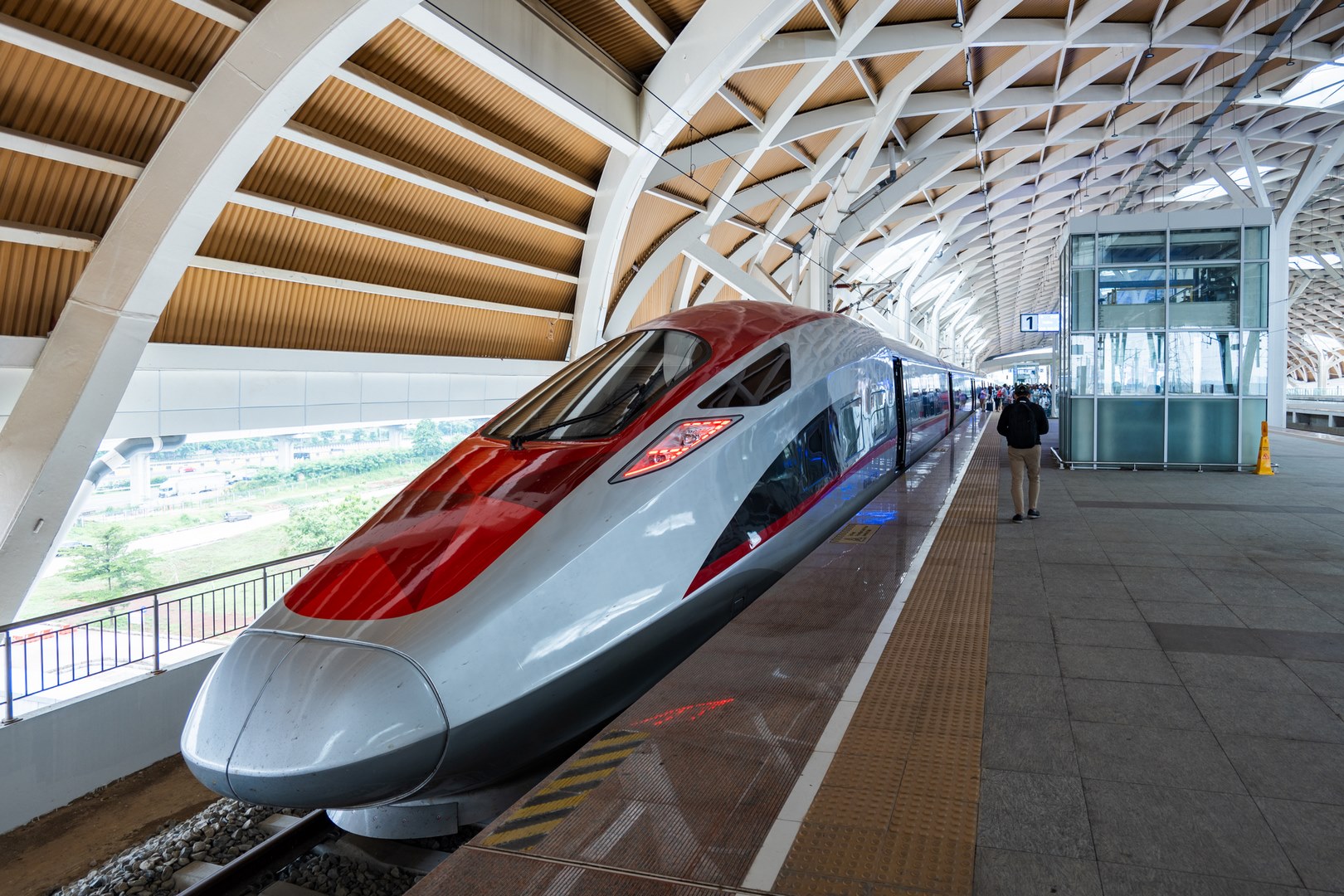
Additionally, Java has an extensive network of toll roads and highways, which are constantly expanding, allowing for faster and more efficient road travel. Whether you’re traveling by train, bus, or private car, getting around Java is easier than on most other Indonesian islands.
Domestic Flights
For covering long distances quickly, domestic flights are the best option. Java has several airports, making it easy to fly between major cities like Jakarta, Yogyakarta, and Surabaya. Budget airlines like AirAsia and Lion Air offer affordable flights, while Garuda Indonesia provides a more comfortable experience.
Trains

Java boasts the best railway network in Indonesia. Traveling by train is not only scenic but also comfortable and efficient. Executive class trains offer spacious, reclining seats and air conditioning, perfect for long journeys. Book your tickets early via Traveloka or tiket.com, especially during holidays.
Find all you need to know about trains in Java in our article How to Travel by Train in Indonesia.
Buses and Shuttle Services
Buses are a budget-friendly option, though often slower than trains. For more comfort, opt for shuttle buses, known locally as “travel,” which are smaller vans that provide direct routes to less accessible areas, or sleeper buses. Tickets can be bought online, at bus terminals, or through local travel agencies.
Motorbike Rentals
Renting a motorbike is one of the most flexible ways to explore Java, especially in cities like Yogyakarta or small towns. Expect to pay around 100,000 IDR per day (around 6 USD). Always wear a helmet and drive carefully—traffic can be chaotic.
Even though it may seem like traffic rules are often ignored in Indonesia, it’s important to always carry a valid driver’s license from your home country along with an International Driving Permit (IDP), if your country issues one. This is primarily for your own safety—if you’re involved in an accident, your insurance company may refuse to cover any costs without the proper documentation.
Taxis and Ride-Hailing Apps

In larger cities, Blue Bird taxis are the most reliable. For more affordable options, use ride-hailing apps like Grab or Gojek. They offer car and motorbike and car rides, as well as food delivery services.
Backindo Tip: Gojek only works with local mobile numbers. If you don’t have one, install Grab instead.
Public Transportation
Cities like Jakarta and Yogyakarta have organized public transport systems. Jakarta offers TransJakarta buses, the MRT (subway), and commuter trains (KRL). Yogyakarta has the TransJogja bus network, ideal for getting around the city.
Most public transportation in Indonesia is now cashless, so you’ll need a tap card with credit to pay for your rides. There are different options available: local cards like JakCard and JakLingko, which only work in certain cities, and universal cards like Flazz and e-Mandiri, which can be used across Java.
Not sure which tap card to choose? Read JakCard vs JakLingko: Which Card Travelers in Jakarta Need.
Car Rentals
Renting a car can be convenient for family trips or group travel. However, traffic is heavy and driving habits are different, so hiring a car with a driver is often a safer choice. Prices vary based on the car type and rental duration.
Ferries and Boats
If you’re venturing to nearby islands, ferries are available from various ports across Java. Popular routes include Banyuwangi to Bali and Karimunjawa islands from Jepara.

Accommodation in Java
Finding a place to stay in Java is easy, especially in tourist hubs like Jakarta and Yogyakarta. In more rural areas, you’re more likely to encounter traditional guesthouses rather than hostels.
In Indonesia, you can easily book accommodation online through various platforms. Check out my top recommendations in Best Websites for Booking Accommodation in Indonesia.
Hostels and Guesthouses
In cities, you can easily find budget-friendly hostels. For a more authentic experience, guesthouses offer cozy accommodations with a local touch. Always check booking conditions on platforms like Traveloka or Booking.com and compare which platform provides better rates.
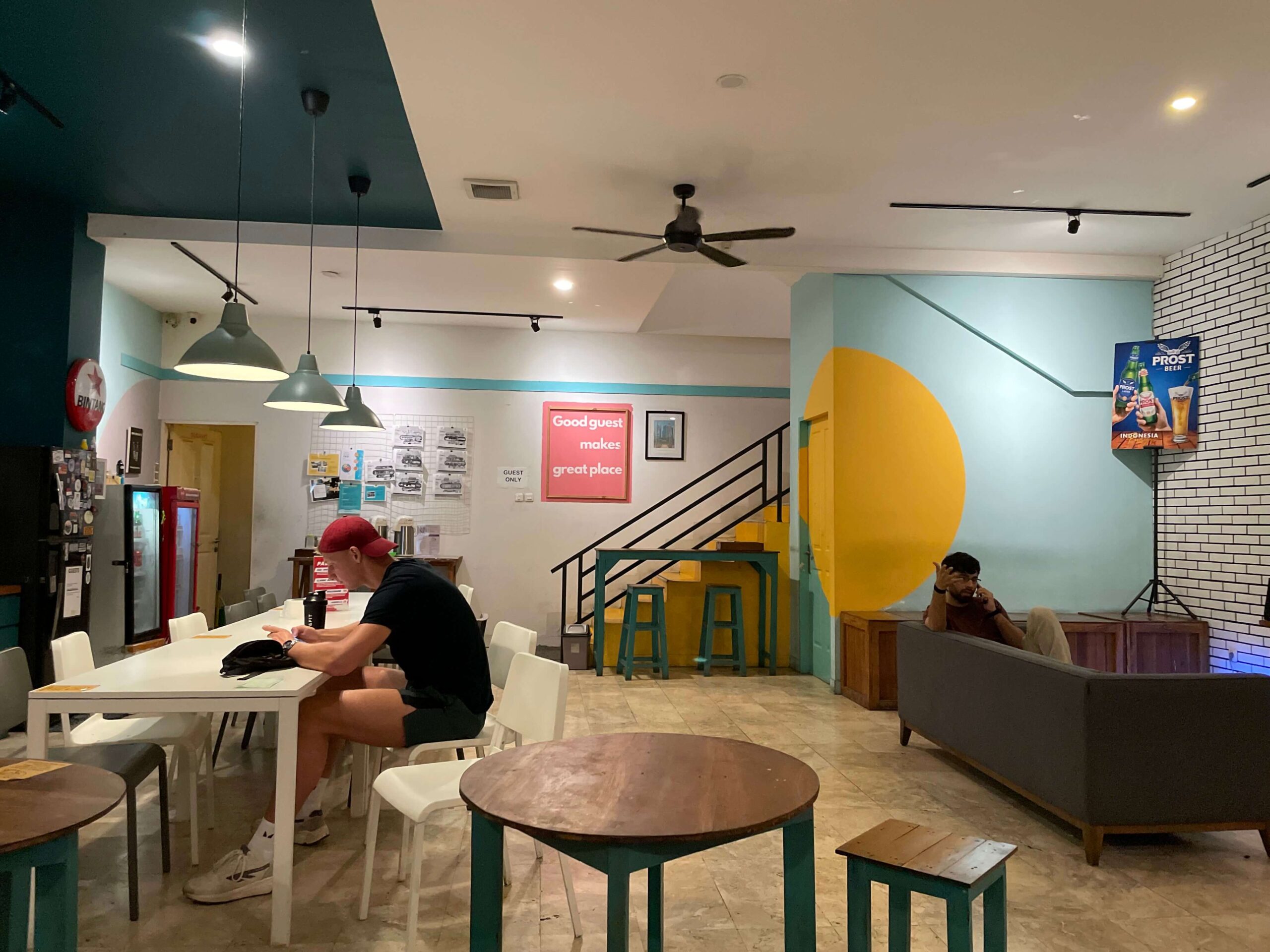
Mid-Range to Luxury Hotels
Many hotels come with swimming pools, spas, and massage services, providing the perfect place to unwind after a day of exploring. Breakfast buffets are often included, featuring a mix of local and international dishes. Some hotels are family-friendly, with kids’ clubs, playgrounds, and special amenities designed for children.
Private Rooms and Apartments
If you prefer privacy, you’ll find hundreds of hotels and apartments across the island. Use filters on booking platforms to select accommodations with recent reviews and ratings above 8. Lower-rated places may lack cleanliness and comfort. Also Airbnb works fine.

Syariah Accommodations
Some places in Java follow Islamic Syariah laws, meaning unmarried couples cannot share a room. Always check the accommodation’s policy beforehand.
"Not sure what Syariah accommodation means? Read Sharia Accommodation in Indonesia: What Tourists Should Know.
Food in Java
Java’s cuisine revolves around rice, often served three times a day. Meat can be pricey, so locals often substitute it with tempeh or tofu. Most dishes are fried, making the local food flavorful but not always the healthiest.

Street Food
For an authentic experience, skip restaurants and try street food at warungs (small stalls) or wartegs (larger food stalls). Popular dishes include:
- Nasi Goreng: Indonesian fried rice.
- Mie Ayam: Noodles with chicken and greens.
- Rendang: Slow-cooked beef, considered one of the world’s best dishes.
- Bakso: Meatball soup.
- Soto: Traditional soup.
- Satay: Grilled meat skewers.
Vegetarians will enjoy dishes like Cap Cay (stir-fried vegetables), Gado-Gado (vegetable salad with peanut sauce), and Pecel (spicy peanut sauce salad). Always specify if you want no meat (“tanpa daging”) or eggs (“tanpa telur”).
Are you vegetarian or vegan traveling to Java? Make sure to check 12 Traditional Vegetarian Food in Indonesia + How to Order.
Snacks and Sweets
Try local treats like martabak (sweet or savory pancakes), kue (traditional cakes), and bakpao (stuffed buns). Indonesians love to top desserts and drinks with shredded cheese, so don’t be surprised!
Exotic Fruits
Java is home to a wide variety of exotic fruits, many of which are available year-round. Depending on the season, you can find sweet mangoes, vibrant dragon fruit, and the infamous durian, known for its strong aroma and creamy texture.
You can easily find fresh fruit at street stalls or traditional markets. At street stalls, prices are usually fixed and clearly displayed, making it easier for travelers to buy without bargaining. Traditional markets, on the other hand, offer a wider selection, but prices may vary, and bargaining is more common.

And don’t forget to try the freshly prepared local juices! One of the best is sirsak juice (soursop)—slightly tangy and not overly sweet. Other great options include avocado, mango, and orange juice, commonly served as “es jeruk” (iced orange juice) or “jeruk hangat” (warm orange juice), which is especially refreshing in cooler highland areas.
Coffee and Tea Lovers
Java is a paradise for coffee and tea enthusiasts, offering some of the best brews in the world. Indonesian coffee, particularly from Java and Sumatra, is globally renowned for its rich flavors and deep aromas.
However, it’s interesting to note that while high-quality coffee is abundant, many locals prefer a more economical option. They often roast their own coffee beans at home, sometimes mixing them with rice, resulting in a distinctive local flavor. In many affordable warungs (small eateries), it’s common to find instant coffee sachets that come pre-mixed with sugar and creamer.
If you’re looking for a great coffee experience, head to specialty cafes, where you can enjoy freshly brewed local coffee made by skilled baristas.
Health and Hygiene in Java
No special vaccinations are required to enter Indonesia, but travel vaccines like hepatitis A and B, tetanus, and typhoid are recommended. Wild dogs are rare on Java, and monkeys are mainly found in national parks, so the risk of bites or scratches is low.
Mosquitoes are present throughout Java, so wearing long sleeves and pants is the best protection. You can also use Minyak Kayu Putih, a locally available aromatic oil that repels mosquitoes and is also useful for colds and massages. For stronger protection, Soffell mosquito repellent is widely available in supermarkets and pharmacies.
Tap water is not drinkable, so always stick to bottled or filtered water. Hygiene standards can be different from what you’re used to—handwashing is not very common, so it’s a good idea to bring antibacterial gel or wipes from home.

Most public toilets in Java are squat toilets (Turkish-style), and toilet paper is not commonly provided. Instead, there’s usually a bucket of water and a scoop (gayung) or a bidet spray. Toilet paper can be purchased in small supermarkets like Alfamart or Indomaret, but never flush it down the toilet—it should be thrown in the bin next to the toilet.
In Indonesian culture, the left hand is considered unclean as it is traditionally used for personal hygiene after using the toilet. Because of this, people eat, shake hands, and exchange money with their right hand.
Want to avoid cultural misunderstandings? Read Know the Manners in Indonesia: Do’s and Don’ts Guide for Travelers.
Safety in Java
From my experience, Java feels like a very safe place to travel. The locals are incredibly friendly and always willing to help, whether it’s giving directions or offering assistance when needed. Even as a solo female traveler, I feel comfortable walking around alone, even at night.

That said, I was once pickpocketed on a bus, but that was entirely my fault—my wallet slipped out, making it an easy target. In general, petty theft isn’t a big issue as long as you keep an eye on your belongings, especially in crowded places like markets and public transport.
I also make sure not to dress too revealingly, not out of safety concerns, but simply to avoid unnecessary attention. Being mindful of local norms helps me blend in and travel without discomfort.
Religion, Holidays, and Traditions
Java is an island rich in cultural and religious diversity. Historically, it served as a central hub for Buddhism and Hinduism. The world-renowned Borobudur temple, the largest Buddhist temple globally, and numerous Hindu temples on the Dieng Plateau and around Yogyakarta reflect this legacy. Over time, these religions gave way to Islam, and today Indonesia is home to the world’s largest Muslim population, most of whom live on Java.
Despite Islam being the predominant religion, Indonesia is known for its religious tolerance. Six official religions coexist peacefully: Islam, Protestantism, Catholicism, Hinduism, Buddhism, and Confucianism. However, societal norms, particularly in rural areas, lean towards conservatism. Visitors should dress modestly and behave respectfully, especially when visiting places of worship or traditional communities.

In non-touristy regions, revealing clothing or unconventional behavior may attract unwanted attention. For example, tank tops, deep necklines, and shorts may not be well-received. In mosques, men should cover their legs, and women should cover their shoulders and knees.
Festivals and Holidays
- Dieng Culture Festival (August): Held on the Dieng Plateau, this lively festival showcases local traditions, music, dance, and cultural performances, with the highlight being the ritual shaving of dreadlocked children’s hair, symbolizing growth and renewal. However, be prepared for massive crowds, inflated accommodation prices, and heavy traffic, which can make getting around quite challenging.
- Vesak Day (May): A significant Buddhist celebration marking the birth, enlightenment, and death of Buddha. Thousands of monks and pilgrims gather at Borobudur for ceremonies and a serene lantern release.
- Independence Day (August 17): Celebrated nationwide, streets are adorned with red and white flags, and locals participate in parades, traditional games, and community festivities.
- Eid al-Fitr (Lebaran): Marking the end of Ramadan, this major Islamic holiday sees millions travel home to celebrate with family. Jakarta empties out, businesses close, and transportation becomes heavily booked.
- Eid al-Adha (Festival of Sacrifice): Commemorating the willingness of Ibrahim to sacrifice his son, this holiday involves communal prayers and animal sacrifices shared with the needy.
During these holidays, especially Islamic ones, expect some closures of shops and tourist attractions. Traffic can be overwhelming due to mass movements of people returning to their hometowns, so book well in advance.

What Else You Should Know
- Languages: Indonesia has over 700 languages, with Indonesian (Bahasa Indonesia) as the official language. On Java, Javanese and Sundanese are widely spoken.
- Electricity: Power outlets are the same as in Europe (Type C and F, 220V), but some lack grounding, so a universal adapter may be useful.
- Toilets: Western toilets are common in hotels and guesthouses, but squat toilets dominate in public places. In rural areas, carry toilet paper, as it’s rarely provided, and remember to dispose of used paper in the bin, not the toilet.
- Tipping: Not customary but appreciated in upscale restaurants and hotels.
- Etiquette: Blowing your nose in public is considered rude. Eat with a spoon or your right hand, as the left hand is seen as unclean. Greetings are often a gentle handshake followed by placing the hand over the heart.
- Time Zone: Java operates on GMT+7.

- Traffic & Crossing Streets: Traffic is chaotic, and even at traffic lights, vehicles may not stop. Raise your hand confidently to signal your intent to cross.
- Mobile Data & SIM Cards: Telkomsel offers the best coverage in Java. Tourist SIM cards work for short-term stays, but if you plan to stay longer than 90 days, it’s best to register your phone’s IMEI immediately upon arrival at the airport. This helps avoid import taxes and ensures your SIM card continues working without issues. If you don’t register in time, your phone will be blocked from local networks, leaving you with only WiFi access or the option to pay the required tax.
- Accommodation & Local Customs: In traditional accommodations, unmarried couples may not be allowed to share rooms, so always check the hotel’s policies in advance.
- Alcohol & Drugs: In general, public drinking is frowned upon, and in some areas, alcohol is hard to find. Drug laws are extremely strict, with severe penalties, including the death penalty, so avoid them completely.
What next?
- Explore more! Check out our travel guides for both popular destinations and hidden gems in Java.
- Join the conversation! Connect with fellow travelers in our Facebook group 👉 Java Travel Tips & Authentic Experiences.
- Stay updated! Follow us on social media for insider tips, or contact us if you have any questions.
- Most importantly—enjoy your trip to Java! 😊
